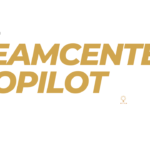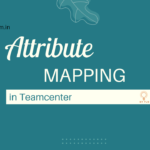Teamcenter, a comprehensive product lifecycle management (PLM) system, plays a pivotal role in managing and optimizing product development processes. One of its key features is the concept of teamcenter organization, which serves as a fundamental building block for creating efficient work structures. In this blog, we will delve into the essence of organizations in Teamcenter and explore how they contribute to seamless collaboration and streamlined workflows.
Table of Contents
What is an Teamcenter organization?
Teamcenter organization is a logical entity that represents a group of users with similar roles, responsibilities, and permissions within the PLM system. These organizations can be tailored to reflect the real-world structure of a company, allowing for the efficient management of data, processes, and resources.
Key Components of Teamcenter organization
1 Users
An organization consists of individual users who are members of various teams and contribute to different aspects of the product development lifecycle. Users within an organization have specific roles and permissions, ensuring that they can access and modify only the information relevant to their responsibilities.
2 Roles
Roles define the set of permissions and capabilities a user has within the organization. Teamcenter offers a range of predefined roles, such as designer, reviewer, or administrator, which can be assigned to users based on their responsibilities.
3 Teams
Teams are subgroups within an organization, and they allow for the efficient organization of users based on project, department, or functional requirements. Teams streamline communication and collaboration by providing a structured environment for users to work together on specific tasks.
4 Organizational Units
Organizational units are hierarchical structures that help model the real-world organization of a company. They can represent departments, divisions, or any other organizational structure. Organizational units provide a way to organize users and teams, simplifying the management of permissions and access control.
Benefits of Using Teamcenter organization
1 Access Control
Organizations enable fine-grained access control, ensuring that users have the appropriate permissions to perform their tasks while maintaining data security.
2 Efficient Collaboration
By organizing users into teams, Teamcenter facilitates efficient collaboration. Teams can be configured to match project requirements, allowing for seamless communication and shared responsibilities.
3 Workflow Management
Organizations play a crucial role in defining and managing workflows. Workflows specify the sequence of tasks and approvals required for product development, and organizations ensure that the right users are involved at each stage.
5 Scalability
As organizations grow, Teamcenter’s organizational structure can scale accordingly. Whether adding new users, creating additional teams, or expanding organizational units, the system adapts to the changing needs of the business.
Conclusion
In conclusion, organizations in Teamcenter are the backbone of a well-structured and efficient PLM environment. They provide a framework for organizing users, roles, and teams, ultimately contributing to seamless collaboration, effective access control, and streamlined workflows. As companies strive for innovation and competitiveness, leveraging the organizational capabilities of Teamcenter becomes essential for optimizing product development processes and ensuring the successful lifecycle management of their products.
Read More Articles
Exploring the Power of Tiles in Teamcenter’s Active Workspace Client
Understanding the Contrast: Volume vs. Database in TC
Exploring TC: The Central Hub for Product Lifecycle Management
Understanding Item Revision in TC: A Comprehensive Guide
Unlocking Efficiency and Precision: Understanding Workflow Designer in TC
Understanding PLM (Product Lifecycle Management): A Comprehensive Guide
Demystifying BMIDE in TC: Empowering Effective PLM Solutions
Understanding Organizations in TC: Building Efficient Work Structures
Demystifying Datasets in TC: A Comprehensive Guide
A Step-by-Step Guide to Installing TC Software
Revealed Pseudofolders in Siemens TC: Simplifying Data Management for Engineers
Unlocking TC’s Potential: A Guide to Creating Custom Properties







